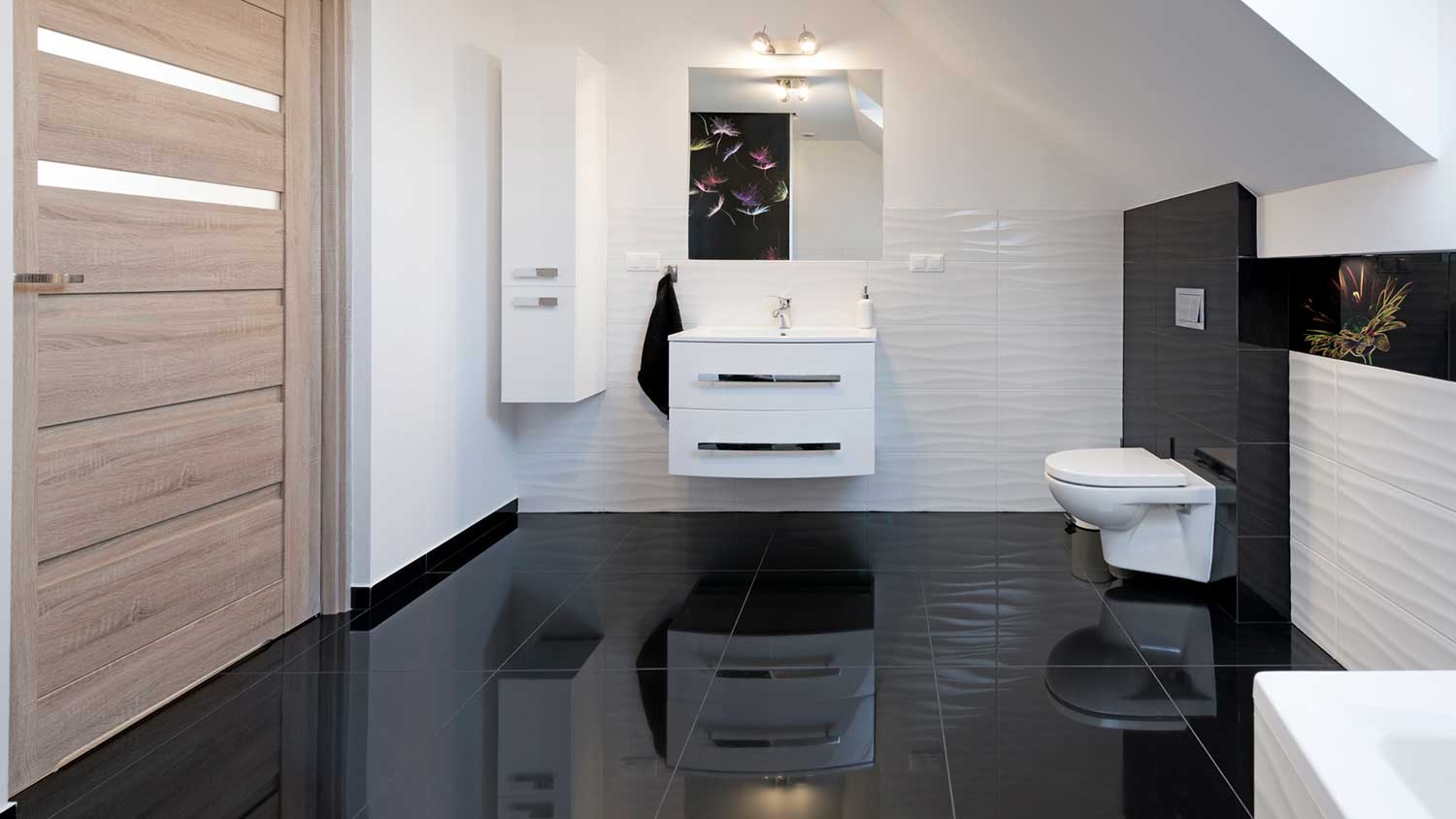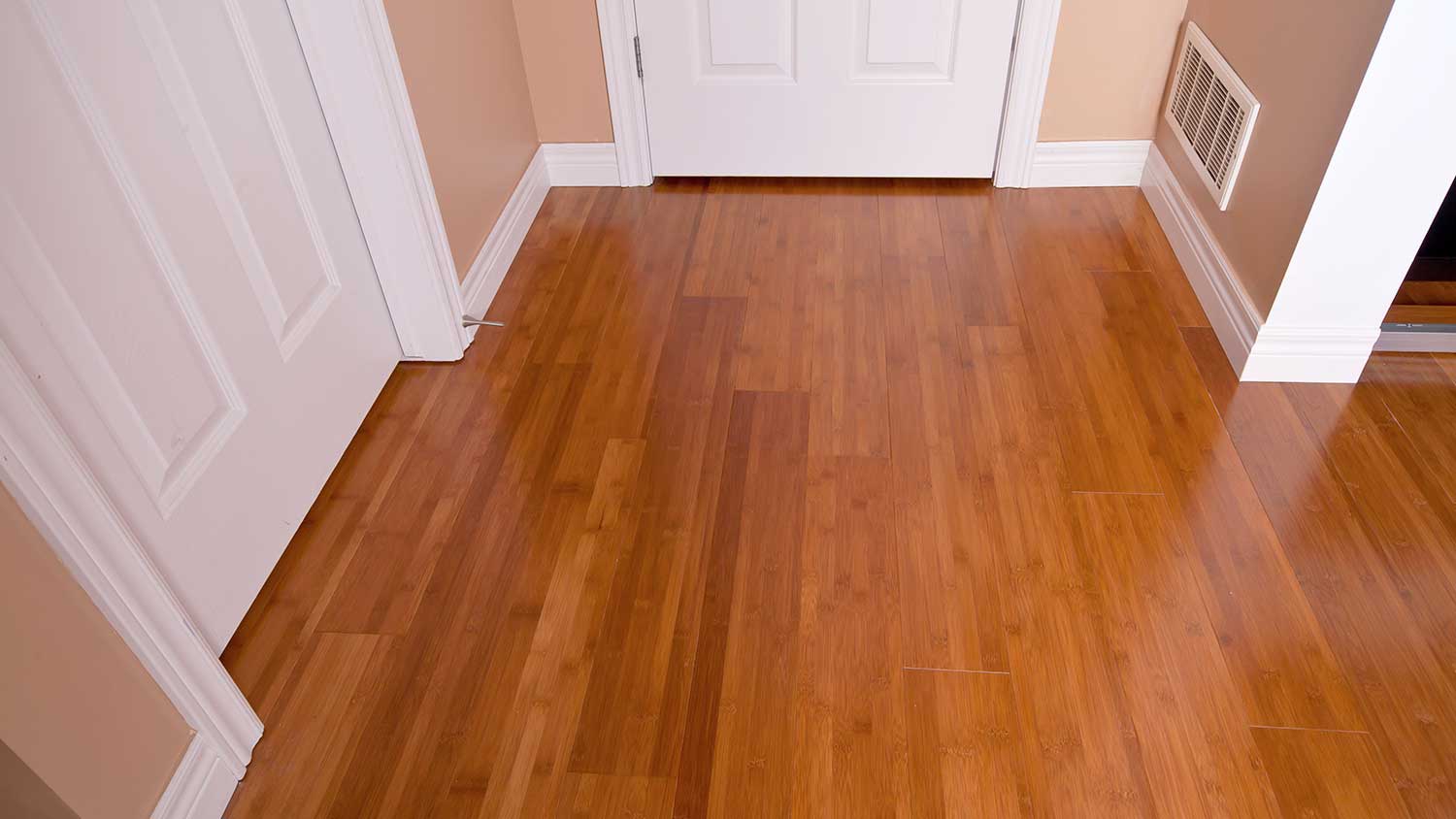
If your laminate is damaged, it’s time for repairs or replacement. This guide will show you everything you need to know about laminate floor repair costs.
Don’t be bamboozled: Both options are solid for floors


Solid bamboo flooring is sustainable, durable, and easy to install.
Tile flooring is affordable, moisture-resistant, and comes in many styles.
Bamboo is best suited for homes with kids and pets in low-humidity regions.
Tile is best suited for kitchens, bathrooms, and high-traffic areas.
On average, tile costs $1,900, and solid bamboo costs $3,400.
If your floor looks dingy and damaged, it’s time to consider a replacement. But with so many flooring materials on the market, how can you choose the right one for your home? If you’re stuck between solid bamboo and tile, there are several key differences to know. Let’s explore these differences and the pros and cons of solid bamboo flooring versus tile to determine the right one for your home.
Bamboo and tile are popular flooring materials but have several notable differences. Bamboo is easy to install and offers a modern aesthetic but has few design options. Tile is affordable and has numerous styles, colors, and shape options to match your home decor, but it requires more maintenance than bamboo. Both materials are durable and can transform the look of your home. So, which should you choose?

Solid bamboo flooring is similar to hardwood but made from bamboo grass instead of wood. There are several different types of bamboo flooring, each with a slightly different installation method. Bamboo offers a natural look and feel and is highly durable, making it suitable for many households.
| Pros | Cons |
|---|---|
| Eco-friendly | Limited designs |
| Highly durable | Higher cost |
| DIY-friendly | Susceptible to moisture damage |
Best for:
Homes with kids and pets
Homeowners who prioritize sustainability
Homes in low-humidity regions
Bamboo is a fast-growing plant, producing a sustainable flooring material that appeals to eco-conscious homeowners. It is also highly durable and ideal for households with kids and pets who might scratch or otherwise damage the floor.
Bamboo is also a DIY-friendly flooring material. A homeowner with basic DIY experience can learn how to install bamboo flooring, though it can be time-consuming.
Bamboo is susceptible to humidity and moisture damage, so those who live in very humid areas may prefer a different flooring material. It’s also best to keep bamboo out of areas likely to see spills, like kitchens and bathrooms. If you do spill anything on a bamboo floor, wipe it up fast to prevent permanent damage.
Bamboo’s aesthetic might not suit all tastes, and there aren’t many design options, so it might not fit the style and design of your home. It can also be more expensive to install than tile; bamboo flooring costs $1,750 to $5,000, with homeowners paying an average of $3,400 for materials and installation.

Tile flooring is highly durable and available in various materials, colors, and shapes to match your space. The most popular types of tile are made from ceramic, porcelain, or natural stone and are ideal for installation in wet areas like kitchens and bathrooms, though they can be installed in any room.
| Pros | Cons |
|---|---|
| Highly durable | Uncomfortable underfoot |
| Affordable | Difficult installation |
| Wide choice of styles, shapes, and patterns | Grout can get grimy |
| Resistant to moisture |
Best for:
Kitchens and bathrooms
High-traffic areas
Outdoor flooring
Tile is a durable and water-resistant flooring material often installed in kitchens, bathrooms, and other areas likely to experience spills. It also withstands high humidity well, making it an excellent choice for homes in incredibly humid regions.
Flooring tiles come in various colors, patterns, shapes, and textures so that you can find the perfect match for your home decor. Some tiles can even mimic more expensive flooring materials, like wood and marble, at a fraction of the cost. Tile floor installation costs between $800 and $3,000, with homeowners paying an average of $1,900.
Tile flooring can be pretty uncomfortable to walk on and can feel cold underfoot. Wearing slippers with good grips can help alleviate any discomfort, as can strategically placed mats and rugs, but a tile floor will never be as comfortable to walk on as a bamboo, hardwood, or carpet floor.
Tile is also challenging to install and less DIYable than bamboo. Therefore, despite the potentially lower cost of tile flooring materials, you’ll need to factor the labor cost into your budget.

Consider how solid bamboo flooring compares to tile in several notable categories when choosing a flooring material.
Tile is hands-down the best choice if you want endless options. You can choose from porcelain, ceramic, terracotta, travertine, slate, marble, and cement tiles. They come in various shapes, sizes, and patterns to blend effortlessly with your home decor.
While bamboo is attractive, it won’t be to everyone’s taste. Bamboo flooring has fewer options regarding color and style, so it might not work with your home’s aesthetic.
Tile and bamboo are both extremely durable flooring materials. They are resistant to dents, scratches, and damage, which makes them ideal for high-traffic areas in the home. Depending on the tile material, dropping a heavy item on the floor could cause a crack. While highly durable, bamboo is susceptible to moisture damage and isn’t ideal for kitchens or bathrooms. However, fixing a scratch in bamboo flooring is relatively simple and can be done by most homeowners.
The exact cost of your flooring installation depends on the type of tile or bamboo you choose. Ceramic tile costs as little as $0.50 per square foot, while cement tile can cost as much as $30 per square foot. Engineered bamboo costs $2 to $5 per square foot, and solid bamboo costs up to $10 per square foot. However, the overall cost of installing a tile floor is lower at an average of $1,900, compared to $3,400 on average for a bamboo floor.
Bamboo is a good choice if you want to install your flooring yourself. Click-locking and tongue-and-groove are both DIY-friendly, even for homeowners with little experience. Tile floor installation is much more complex and typically requires professional installation. A local floor tile contractor has the proper tools to complete the installation and will ensure the finished floor is free from installation errors.
Bamboo flooring requires regular maintenance, including vacuuming, mopping, and spot cleaning. Other than that, it’s a relatively low-maintenance flooring type. Tile requires the same everyday care but will also require grout maintenance. You’ll need to seal the grout every few months to prevent discoloration and deterioration, and you may need to repair or regrout if you notice any damage.
Solid bamboo flooring lasts 10 to 30 years with proper maintenance. It can be sanded and refinished if it shows wear and tear, increasing its life span further. Tile flooring lasts between 10 and 20 years but requires regrouting once a decade to prolong its life span.
From average costs to expert advice, get all the answers you need to get your job done.

If your laminate is damaged, it’s time for repairs or replacement. This guide will show you everything you need to know about laminate floor repair costs.

Discover vinyl flooring installation costs, including average prices, key cost factors, and tips to save on your new floors.

Terrazzo may cost more than many other flooring options, but its longevity and high return on investment make it worthwhile.

Installing flooring yourself can save you money and give you a sense of pride. Learn about the easiest flooring to install and when to choose each type.

Yes, you can fix gaps in laminate flooring. Use these helpful tips to repair end gaps and parallel gaps in floating laminate wood floors.

Learning how to install transition strips in doorways makes the transition between rooms smoother and protects the edges of the flooring.